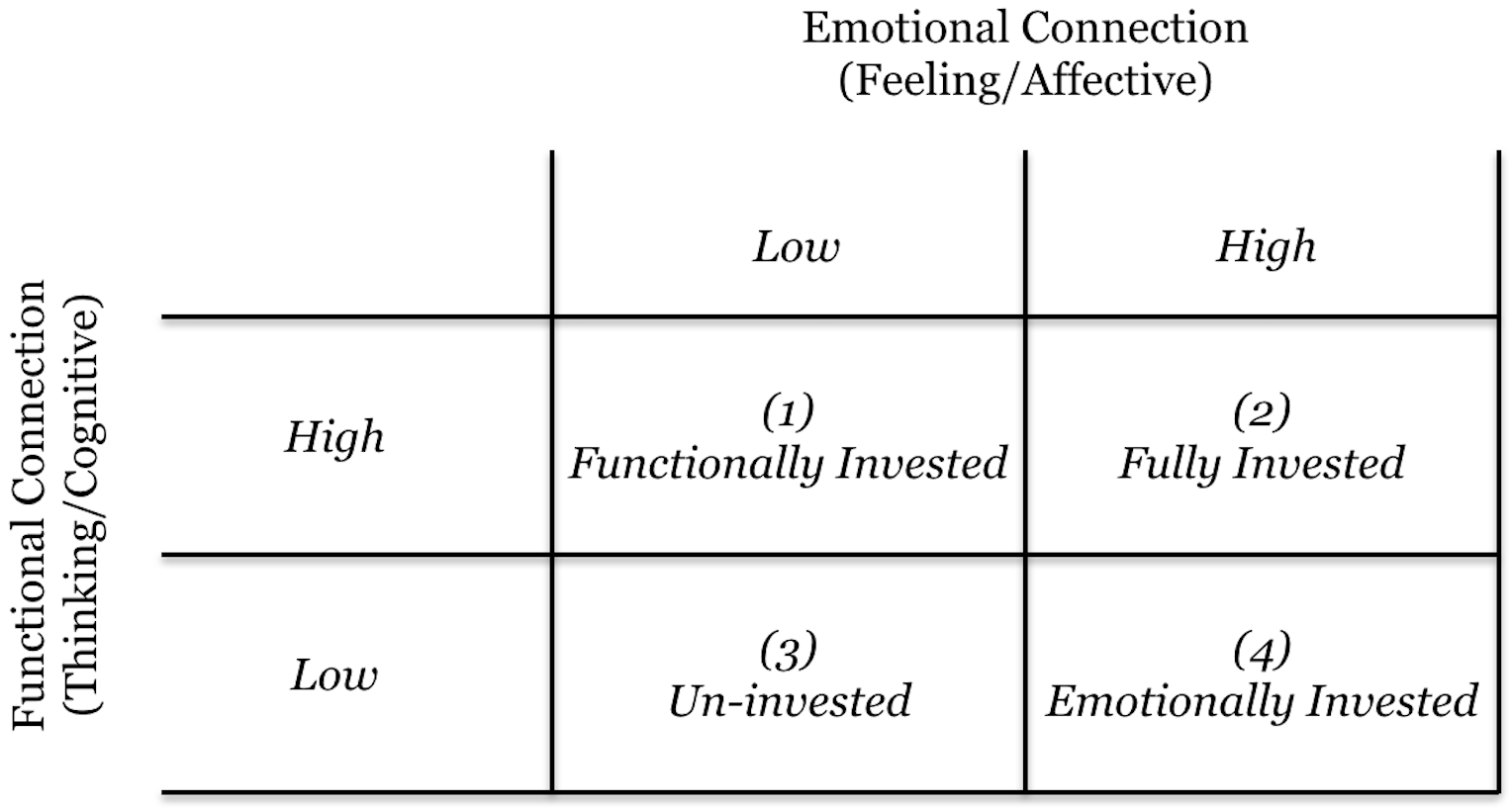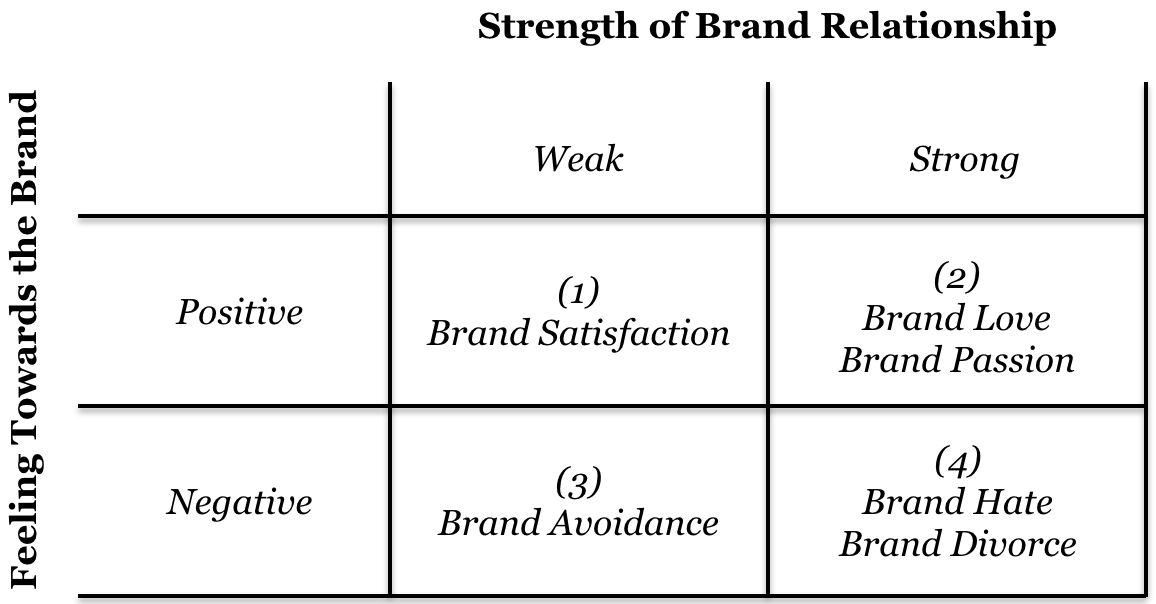I bet that in just a split-second, you are able to recall that one brand that influences and sends positive feelings towards yourself because you know you love that brand.
Brand love is not sparked at first sight, neither does it come at the moment after purchase. But rather something particular that has been nurtured and maintained over time. Brand love makes purchasing goods different. How so? The word ‘love’ itself, refers emotions and sometimes irrational relationships (in this case, it’s purchase) towards something.
The effective strategy in expanding your bottom-line growth is one that nurtures your brand love. Not only will it generate repetitive purchase, but it will also tap into a much more deeper-level, such as emotional attachment between the consumer and your brand. Which is why brand love is much more significant and important than brand loyalty.
And how is brand love nurtured?
Before we get real deep into the strategy, let us address the definition first, along with the explanation of the 'brand connection and feeling' matrix which you can use when you're reflecting on the topic “where does my brand stand in terms of achieving brand love?”
Brand Connection Matrix
There are two independent variables involved in the development of brand love; a functional connection and an emotional connection. A functional connection reflects the functional performance of your brand, such as durability, material quality, user interface and deliverability. An emotional connection on the other hand, refers to abstract ideas and is directly influenced by your brand personality, image and positioning.

Q1: Brand as a colleague
Q2: Brand as a family
Q3: Brand as an acquaintance
Q4: Brand as a friend
Through market research you can learn to categorise and group your customers into the relevant quadrants in the brand-connection matrix.
From this matrix, you should be able to answer these questions:
How many of my customers are in Q2?
Are there too many of my customers in either Q3 or Q1?
Ideally, having your customers in Q1 would mean that you have an already finished product in your hands, that has been rightfully delivered to your customers the way they want it.
This is when a new question arises; how do I drive my customers to Q4 and Q2?
From the brand connection matrix, the dependent variables of emotional connection were removed to create the brand feeling matrix:

From consumer research, you should already know which quadrant most of your customers are in by now. The ranking from the lowest attachment to the highest can be shown as Q4 -> Q3 -> Q1 -> Q2.
These two matrices will give you a clear idea of how you should nurture Brand Love, with the central question being:
How does one create and nurture Brand Love?
The two core-elements in creating brand-love are to communicate both the functional and emotional sides of your brand.
Functional Communication
Start thinking about communicating the functional-side of your product in a different and more creative way. Below are some options on how you can communicate this:
1. Transparent Pricing
With growing consumer concerns over unfair distribution of a purchase, brands should embrace it and be on consumers' side. If you are in the apparel and footwear industry for example, communicate on how you pay for the materials, labor, marketing cost and even your profit. Here’s an example of a company called EVERLANE, that does communicate their transparent pricing.
2. Show Them the Process of Making Your Product
People want to know what’s behind the curtain. Consumers are often driven by pure curiosity or concern over the unethical processes of product-making. Show them that you are ethical, and that you share the same beliefs as they do. Show your customers that you are here to create a better world. In Jogjakarta, Indonesia, a chocolate brand called ‘Monggo’ did exactly this. In its flagship store, the whole process of making their chocolate is shown, and the labourers in their small factory are willing to give more information and talk to consumers as well. This will give customers assurance that the product is hygienic, and labor-fair.
Emotional Communication
The core to-do list to leverage the emotional side is to communicate. Here is a list of strategies that you can adapt in order to enhance an emotional connection with your customers.
1. Emotional Marketing: Brand Purpose
You should be able to communicate to your customers how your brand will help them to improve their lives. Let your customers be aware of your beliefs, and what the purpose of your brand is. If you are not clear enough on how to create a brand purpose, refer to our previous blog resource here. As a matter of fact, most of us did not know of the brand TESLA until just a few years ago. But Elon Musk, the founder of TESLA, helped us resonate with the brand by communicating with the world about how TESLA was created for the better. And people are on the side of people who want to make the world better.
2. Create Community: Brand Community
Every brand that resonates with people has a community of their own. It embraces the sense of unity, family, and closeness between not only the brand and customers, but also between customers that purchase the same brand. One good example is the Harley-Davidson Club Global; their presence can be found in almost in any country that the Harley-Davidson franchise is active in.
3. Treat them like you would a good friend
Be personal, and communicate with them as if you are ‘chatting’ with them. Utilise your social media as a medium to communicate with your customers. Attend to their pain points and concerns over your products. A great example from the retail industry is NET-A-PORTER. With a strong following of 2.9 million followers, they are still proven to attend to their customers' needs and concerns. Below is a screenshot of their Instagram where they respond to their customer's comment comment regarding a negative experience in October 2017.
4. Induce Meaningful Experiences
Learn how to turn consumers into customers, study their customer journey and find ways to improve it. If you have your own dedicated store, make sure that it is able to create exceptional experiences for people the moment they walk into your store. If you only have online presence, make sure that you attend to the needs and questions of each customer and potential customer and deliver over the top experiences. Explore every payment method available that your customers might be using, and find out how to ease their purchase experience. Meaningful experiences should be 360 and done continuously. As a sportswear, Nike created different sub-brands to enhance the experiences for different target customers. NikeLab, one of Nike’s sub-brands, enhances customer experiences through their tweaked and limited products and also has its own dedicated store, separate from the Nike store.
What will you gain from brand resonance and brand love?
There are two things your customers will do once your brand resonates with them and their love for your brand has been nurtured. The first is to develop an Attachment (attitudinal attachment and sense of community), where your customers find it ‘hard to give up’ your brand for other competitors. This will give you the power of price elasticity. Think of Apple and their loyal, loving customers. The second is to start becoming Brand Promoters, in which your customers actively seek information about your brand (latest news, latest product release) whilst providing you with free, honest and effective positive word-of-mouth to their peers. Being Brand Promoters also involves repetitive purchasing patterns, and behavioral loyalty towards your brand.




![How to Conduct Competitive Analysis [With Templates]](https://www.vase.ai/hubfs/How%20to%20Conduct%20Competitive%20Analysis/CompetitiveAnalysis_HeroBanner.png)